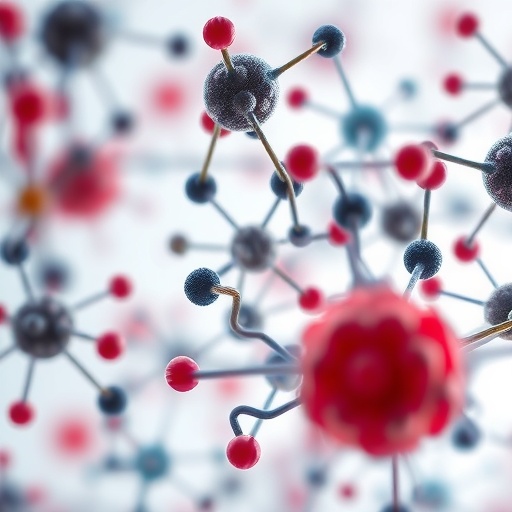
In the relentless pursuit of advancing diabetes care, automated insulin delivery (AID) systems stand as a beacon of hope for millions managing type 1 diabetes worldwide. Originating from the groundbreaking work at the University of Virginia (UVA) Health Center for Diabetes Technology, these systems, including UVA’s renowned artificial pancreas, represent a blend of biomedical engineering and clinical innovation aimed at optimizing blood glucose regulation. Despite their transformative impact, current AID technologies are not fully autonomous, necessitating patient engagement for meal and exercise inputs to avert potentially harmful glycemic excursions.
The present generation of AID systems functions predominantly as hybrid closed-loop devices. They adeptly monitor continuous glucose data and adjust basal insulin delivery but rely heavily on manual input to manage prandial insulin requirements. This semi-automation, while revolutionary compared to traditional insulin therapy, falls short in delivering a truly seamless and hassle-free user experience. Notably, these devices exhibit optimal performance during nocturnal periods when metabolic variables are relatively stable, underscoring the complexity of replicating endogenous pancreatic functions during dynamic daytime physiological challenges.
Type 1 diabetes presents a multifaceted challenge by virtue of its autoimmune genesis and the consequent absolute insulin deficiency. The disease demands meticulous timing and dosing of insulin to emulate physiological pancreatic secretion. Contemporary AID technology addresses this by integrating continuous glucose monitoring (CGM) sensors and insulin pumps via sophisticated algorithms; however, meal and activity-driven glucose fluctuations remain problematic. The necessity for precise carbohydrate counting and anticipatory insulin bolusing introduces cognitive burden and potential for error, factors that complicate widespread adoption and consistent use.
.adsslot_UHYPm8hLIF{width:728px !important;height:90px !important;}
@media(max-width:1199px){ .adsslot_UHYPm8hLIF{width:468px !important;height:60px !important;}
}
@media(max-width:767px){ .adsslot_UHYPm8hLIF{width:320px !important;height:50px !important;}
}
ADVERTISEMENT
The future of AID as envisioned by UVA researchers gravely pivots on achieving fully automated, or full closed-loop, systems. These systems aspire to eliminate the need for manual user interaction by leveraging advancements in artificial intelligence, machine learning, and real-time data analytics. Current clinical trials underway at UVA investigate algorithms that merge AI capabilities with model-based predictive controls, enabling autonomous insulin delivery strategically aligned with metabolic demands, particularly surrounding meals. This paradigm shift has the potential to substantially reduce user workload and enhance glycemic outcomes.
A novel frontier in this domain involves the deployment of artificial neural networks that interpret complex patterns in glucose data, insulin kinetics, and lifestyle variables. Such AI-driven systems dynamically adapt insulin delivery protocols personalized to the individual’s physiological responses and behavioral patterns. Concurrent developments include hybrid hormone delivery platforms capable of administering glucagon alongside insulin to mitigate hypoglycemia risk. These dual-hormone devices seek to better mimic native islet cell function by counterbalancing glucose fluctuations proactively.
Despite these promising technological strides, gaps persist in access and suitability of AID systems across the heterogeneous population of type 1 diabetes patients. Vulnerable groups such as pregnant women and the elderly currently face restrictions or contraindications for usage, reflecting the need for more inclusive design and rigorous validation. Expanding device usability and ensuring robust safety profiles in diverse clinical scenarios remains a critical objective for developers and clinicians alike.
The implications of transitioning to fully autonomous AID systems extend beyond clinical benefits; they encompass psychosocial and economic dimensions as well. Simplifying the management of insulin therapy may enhance patient adherence, quality of life, and reduce long-term complications. Moreover, broader deployment could alleviate healthcare burdens by minimizing hospitalizations related to hypoglycemia or hyperglycemia and associated comorbidities. The integration of AI and data science thus not only revolutionizes technology but also reshapes the diabetes care landscape.
Marc Breton, PhD, an associate professor at UVA Center for Diabetes Technology and prominent figure in this research advancement, highlights the imminent revolution propelled by these innovations. According to him, over the next several years, personalized and adaptive AID systems utilizing artificial neural networks will be deployed, promising safer, more private, and highly efficacious insulin regulation. This vision embodies the confluence of cutting-edge engineering, computational science, and clinical medicine driving next-generation diabetes therapy.
The research publication, co-authored by leaders including Sue A. Brown, MD, an endocrinologist deeply engaged in translational research, underscores both achievements and ongoing challenges. Brown emphasizes that despite significant progress, patients still shoulder the burden of calculating carbohydrate intake and administering meal-time insulin, underscoring the necessity for further simplification. The transition towards full automation could redefine these paradigms, allowing patients to focus less on mechanical management and more on holistic wellness.
This scholarly paper, featured in premier journals such as Diabetes Technology & Therapeutics and the Journal of Diabetes Science and Technology, forms part of a commemorative collection marking the 75th anniversary of the National Institute of Diabetes and Digestive and Kidney Diseases (NIDDK). The UVA Center for Diabetes Technology’s pivotal role, exemplified by extensive NIH support and strategic planning acknowledgments, has been instrumental in advancing artificial pancreas technology from experimental concept to clinical reality benefiting hundreds of thousands.
The interdisciplinary team behind this research spans expertise in biomedical engineering, endocrinology, computer science, and behavioral health. Such collaborative efforts are essential for navigating the complexities inherent in developing AID systems that are adaptive, reliable, and broadly accessible. Continuous feedback from clinical trials and real-world implementations will inform iterative improvements, ensuring these technologies meet the evolving needs of diverse patient populations.
Looking ahead, the integration of AI-driven AID devices heralds a new chapter in diabetes management. By transcending the limitations of current systems, they promise to deliver truly autonomous glycemic control, reducing the cognitive and physical demands on patients. This evolution aligns with the broader healthcare objective of leveraging digital health technologies to provide personalized, proactive, and patient-centric care. In doing so, it not only transforms lives but also charts a roadmap for innovative chronic disease management in the era of precision medicine.
Subject of Research: Automated Insulin Delivery Systems and Full Closed-Loop Artificial Pancreas Technologies in Type 1 Diabetes
Article Title: Research Gaps, Challenges, and Opportunities in Automated Insulin Delivery Systems
News Publication Date: 1-Jul-2025
Web References:
Making of Medicine blog – UVA
2021-2025 NIDDK Strategic Plan
DOI – 10.1089/dia.2025.01
References: Published in Diabetes Technology & Therapeutics and the Journal of Diabetes Science and Technology, co-authored by researchers from UVA Center for Diabetes Technology and various collaborating institutions.
Image Credits: UVA Licensing & Ventures Group
Keywords: Type 1 diabetes, Insulin, Metabolic disorders, Automated insulin delivery, Artificial pancreas, Artificial intelligence, Closed-loop systems, Glucose monitoring, Diabetes technology, Neural networks
Tags: AI-driven automation in diabetes careartificial pancreas technology for type 1 diabetesautomated insulin delivery systemschallenges of fully autonomous diabetes devicescontinuous glucose monitoring advancementshybrid closed-loop insulin deliverymetabolic variability in diabetes care.optimizing blood glucose regulationpatient engagement in diabetes managementprandial insulin management in AID systemsseamless user experience in diabetes technologyUVA Health Center diabetes innovations





